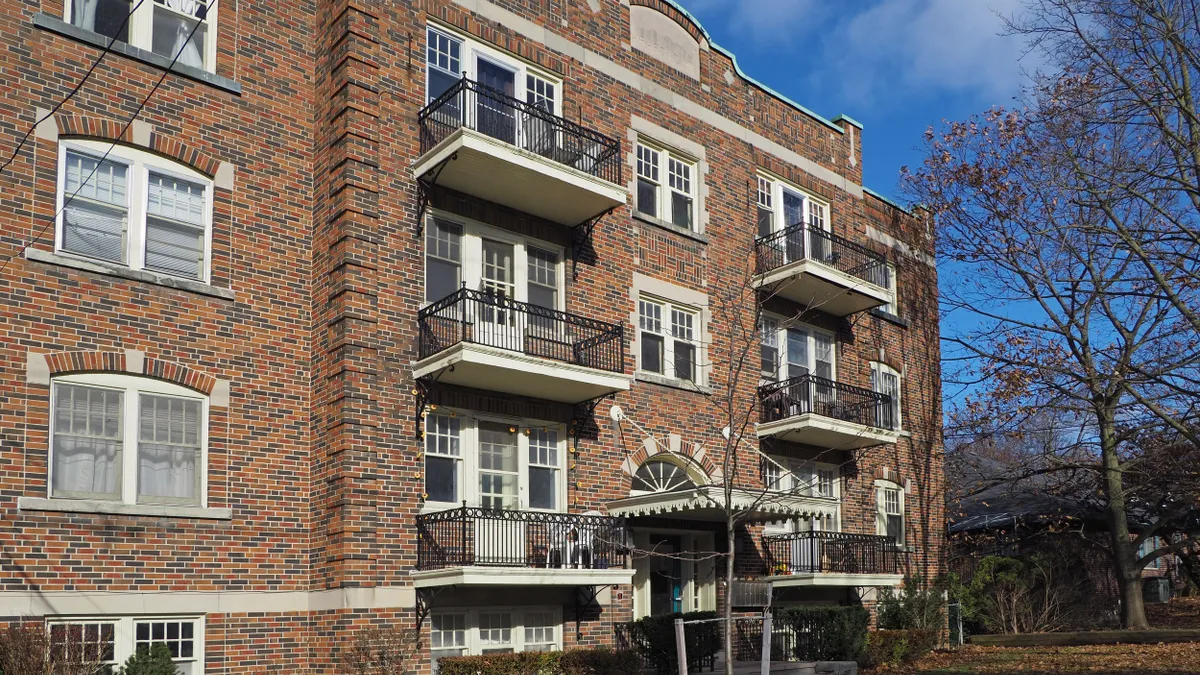Dive Brief:
- The U.S. Department of Energy on Thursday announced an “Earthshot” research and development initiative to reduce energy intensity and utility bills in affordable housing. The effort comes at a time of rising electricity prices and growing interest in energy efficiency as a climate solution.
- Overall inflation is slowing but electricity prices continue to rise faster than other goods, according to data released Thursday by the U.S. Bureau of Labor Statistics, or BLS.
- DOE said its Affordable Home Energy Shot aims to halve the cost of decarbonization in affordable homes and decrease residents’ energy costs by at least 20% within a decade.
Dive Insight:
DOE said its latest Earthshot is a long-term R&D effort focused on building upgrades, efficient electrification, and smart controls for affordable multifamily, manufactured, and single-family homes.
Combined with existing initiatives to reduce energy costs for low-income energy customers, “these efforts will ensure that many households that have struggled to afford energy efficient retrofits will be able to benefit from these opportunities,” DOE said. Through the bipartisan infrastructure law and Inflation Reduction Act, the Biden administration has made $13.5 billion available to support household energy improvements
The effort “will focus the department’s research and development efforts on the most promising next-generation materials and technologies to make energy efficient home upgrades accessible to all,” Secretary of Energy Jennifer Granholm said in a statement. Home improvements “are some of the most effective tools we have to lower our utility bills fight climate change and advance environmental justice.”
Electricity prices have been rising. According to the U.S. Energy Information Administration, average residential prices have risen from $0.1366/kWh in 2021 to $0.1575/kWh this year, more than a 15% increase. Consumers could see some relief next year, however: EIA anticipates the average price will ease slightly to $0.1565/kWh in 2024.
Inflation data from BLS shows “electricity price inflation continues to hurt households and businesses, far outpacing” increases to the overall consumer price index, the Electricity Transmission Competition Coalition said Thursday.
“The September CPI measured monthly electricity services inflation at an increase of 1.3%, compared to just 0.4% for the overall CPI,” the group said.
Almost 25% of U.S. households experience high energy burdens, according to DOE, referring to the percentage of gross household income spent on energy costs. “As a result, more than 20% fell behind on their energy bills in 2022,” the agency said.
Energy efficiency is increasingly seen as a way to reduce energy use, monthly bills and greenhouse gas emissions. Global investments in energy efficiency rose 16% from 2021 to 2022, according to the International Energy Agency.
The Affordable Home Energy Shot will target “cost reductions of individual technologies and retrofit packages ... to ensure communities with the greatest need will benefit from the clean energy transition,” DOE said. “By focusing on the unique barriers specific to affordable housing, we can advance technologies that reduce upfront costs, achieve meaningful bill savings, and address the broader needs of underserved communities.”
The effort will be supported by multiple DOE offices, including the Building Technologies Office, the Office of State and Community Energy Programs, and the Advanced Research Projects Agency–Energy.
DOE said this is its eighth and final Earthshot. Others focused on clean fuels and products, enhanced geothermal, floating offshore wind, long-duration energy storage and hydrogen.















